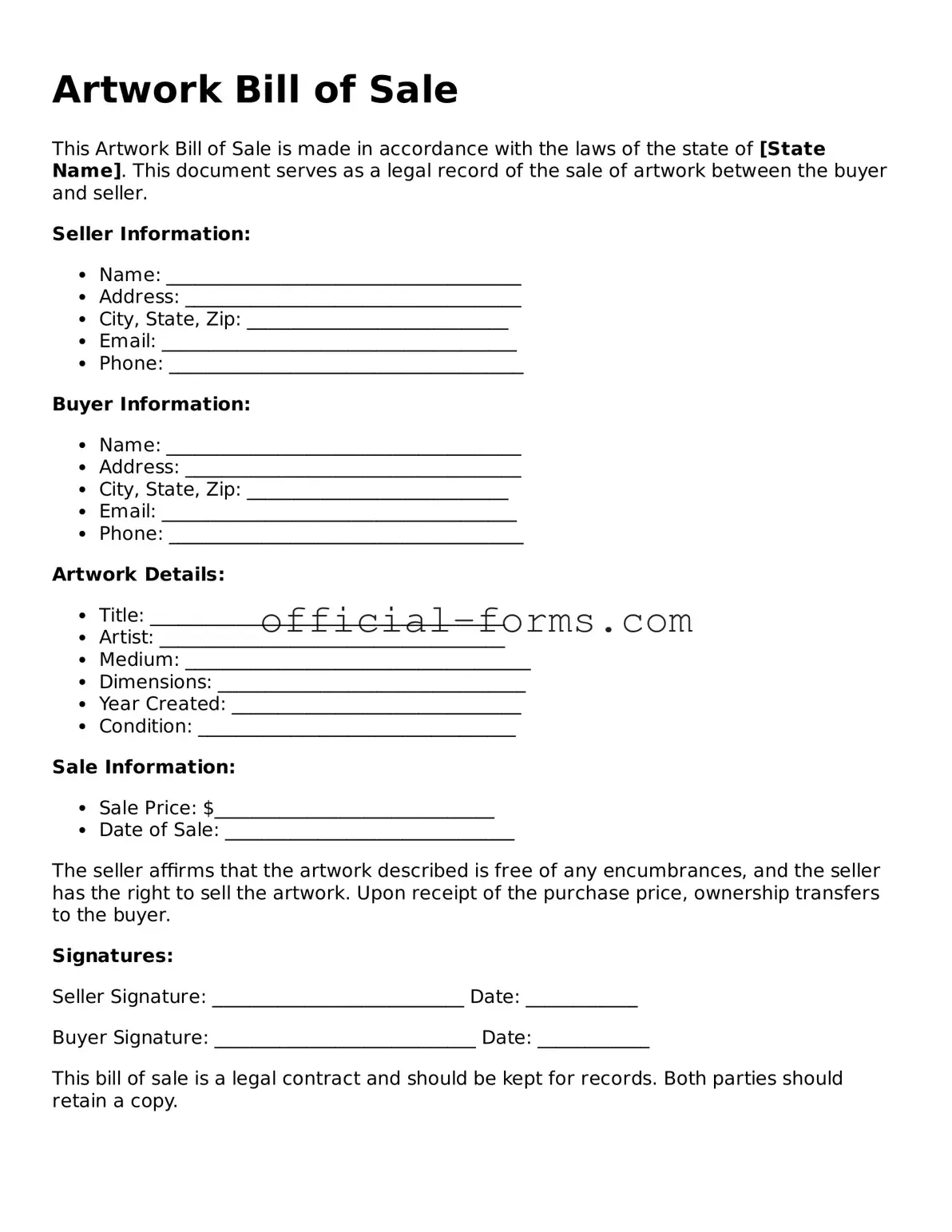Completing an Artwork Bill of Sale form can seem straightforward, but several common mistakes can lead to complications. One frequent error is failing to include all necessary details about the artwork. Buyers and sellers must ensure that the description is clear and comprehensive. This includes the title, artist's name, medium, dimensions, and any other relevant information. Omitting these details can create confusion and disputes later on.
Another mistake involves incorrect or incomplete buyer and seller information. It is essential to provide accurate names, addresses, and contact information for both parties. Inaccuracies can hinder communication and may even affect the legality of the transaction. Ensuring that this information is up-to-date and correctly spelled is crucial.
Some individuals neglect to specify the terms of the sale. This includes payment methods, delivery arrangements, and any warranties or guarantees. Without these terms clearly outlined, misunderstandings may arise. Both parties should agree on the terms before finalizing the sale to avoid future conflicts.
Many people also forget to include a date on the form. The date is vital as it marks the official transaction and can impact the validity of the sale. Leaving this field blank may lead to issues if either party needs to reference the transaction in the future.
Additionally, signatures are often overlooked. Both the buyer and seller must sign the form to validate the sale. A missing signature can render the agreement unenforceable, leaving both parties vulnerable to disputes. It is advisable to check that all required signatures are present before finalizing the document.
Lastly, some individuals fail to keep copies of the completed Artwork Bill of Sale. Retaining a copy for personal records is essential for both parties. This document serves as proof of ownership and the terms agreed upon. Without a copy, it may be challenging to resolve any future issues that arise regarding the transaction.
